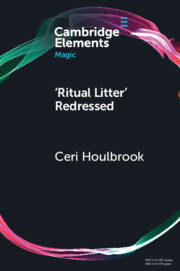Element contents
‘Ritual Litter' Redressed
Published online by Cambridge University Press: 07 April 2022
Summary
- Type
- Element
- Information
- Series: Elements in MagicOnline ISBN: 9781108954761Publisher: Cambridge University PressPrint publication: 19 May 2022
References
- 7
- Cited by

